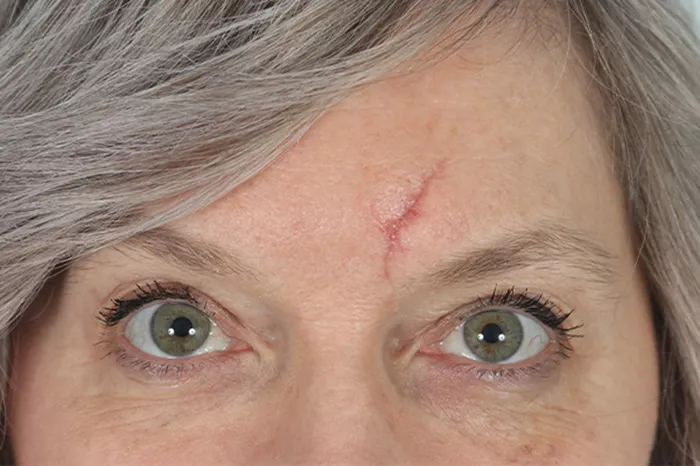Scars are a natural part of the healing process, but for many, they can be a source of discomfort and self-consciousness. As such, effective scar treatment options are highly sought after. Among the various methods available, silicone and hydrocolloid dressings have garnered significant attention. Both have proven benefits, but which is better for scar treatment? This article delves into the science behind these two treatments, comparing their effectiveness, usage, and suitability for different types of scars.
Understanding Scar Formation
Before diving into treatment options, it’s essential to understand how scars form. Scarring occurs when the dermis (the second layer of skin) is damaged, triggering the body’s natural repair process. This involves the production of collagen fibers, which form the scar tissue. While this process is crucial for healing, it can sometimes lead to excessive or abnormal scar formation, such as hypertrophic scars or keloids.
Silicone for Scar Treatment
Silicone has been a mainstay in scar treatment for decades. Available in various forms, including sheets, gels, and creams, silicone is widely recognized for its efficacy in reducing scar appearance.
Mechanism of Action:
Silicone works primarily by creating a protective barrier over the scar. This barrier helps to:
Hydrate the Scar Tissue: Silicone traps moisture in the skin, which is crucial for preventing excessive collagen production that can lead to raised scars.
Reduce Redness and Discoloration: By maintaining an optimal hydration level, silicone can help to normalize collagen production, reducing redness and pigmentation associated with scars.
Flatten and Soften the Scar: Continuous application of silicone can gradually flatten and soften raised scars, making them less noticeable.
Clinical Evidence:
Numerous studies support the effectiveness of silicone in scar treatment. Research indicates that silicone sheets and gels can significantly reduce the size, thickness, and color of scars. For example, a study published in the Journal of Cutaneous and Aesthetic Surgery found that silicone gel was effective in improving the appearance of hypertrophic and keloid scars over a 12-week period.
Usage and Application:
Silicone treatments are generally easy to use. Sheets can be cut to fit the size of the scar and are typically worn for 12 to 24 hours a day, while gels and creams are applied directly to the scar and allowed to dry. Consistent use is key, with results often visible after several weeks of continuous application.
Hydrocolloid for Scar Treatment
Hydrocolloid dressings, initially developed for wound care, have also found a place in scar management. These dressings are composed of a gel-forming agent, such as carboxymethylcellulose, which absorbs exudate and maintains a moist environment conducive to healing.
Mechanism of Action:
Hydrocolloid dressings benefit scar treatment through several mechanisms:
Moist Wound Environment: By keeping the wound moist, hydrocolloid dressings promote faster healing and minimize scar formation.
Pressure Application: These dressings exert mild pressure on the scar, which can help flatten and soften the tissue.
Protection from External Factors: Hydrocolloids shield the scar from bacteria, dirt, and physical trauma, reducing the risk of further damage and irritation.
Clinical Evidence:
Hydrocolloid dressings have shown promise in scar treatment, particularly for surgical scars and acne scars. A study published in the International Journal of Dermatology demonstrated that hydrocolloid dressings could effectively reduce the appearance of postoperative scars, highlighting their potential in managing various types of scars.
Usage and Application:
Hydrocolloid dressings are typically applied directly to the scar and left in place for several days, depending on the manufacturer’s recommendations. They are waterproof and breathable, making them convenient for continuous wear. The dressings should be replaced once they become saturated with exudate or lose adhesion.
Comparing Silicone and Hydrocolloid
When choosing between silicone and hydrocolloid for scar treatment, several factors should be considered:
Effectiveness:
Silicone: Extensive research supports silicone’s effectiveness in treating a wide range of scars, including hypertrophic and keloid scars. Its ability to hydrate, flatten, and reduce discoloration makes it a versatile option.
Hydrocolloid: While hydrocolloid dressings are effective, particularly for fresh scars and minor wounds, their efficacy in treating older or more severe scars may be less pronounced compared to silicone.
Ease of Use:
Silicone: Silicone sheets and gels are user-friendly, but sheets require consistent wear, which might be inconvenient for some users. Gels and creams are more flexible but need regular reapplication.
Hydrocolloid: Hydrocolloid dressings are convenient for extended wear, often lasting several days. However, their bulkiness might not be suitable for scars in visible areas or those requiring a more discreet option.
Skin Sensitivity:
Silicone: Generally well-tolerated, silicone products are suitable for most skin types, including sensitive skin. However, some users may experience mild irritation or allergic reactions.
Hydrocolloid: Hydrocolloid dressings are also suitable for sensitive skin but may cause irritation if not changed regularly or if the skin underneath becomes overly moist.
Cost and Availability:
Silicone: Silicone sheets and gels can be more expensive than hydrocolloid dressings, but their proven efficacy may justify the cost for those seeking significant scar reduction.
Hydrocolloid: Hydrocolloid dressings are generally more affordable and widely available, making them an accessible option for scar management.
Case Studies and Real-World Applications:
To further illustrate the effectiveness of silicone and hydrocolloid dressings, let’s explore a few case studies and real-world applications:
Case Study 1: Post-Surgical Scars
A 35-year-old woman underwent a cesarean section and was concerned about the resulting scar. She applied silicone sheets daily for three months. Over this period, the scar became significantly flatter and less red. Her dermatologist noted a 70% improvement in the scar’s appearance, demonstrating silicone’s efficacy in managing post-surgical scars.
Case Study 2: Acne Scars
A 22-year-old man with moderate to severe acne scars on his cheeks used hydrocolloid dressings. He applied the dressings overnight for six weeks. The dressings helped to reduce the depth and redness of the scars, making his skin appear smoother. Although not as effective as more intensive treatments, hydrocolloid dressings provided a noticeable improvement.
Case Study 3: Keloid Scars
A 40-year-old woman with keloid scars from ear piercings tried silicone gel. She applied the gel twice daily for four months. The keloids became less raised and softer, and the itching associated with the scars decreased. Her experience highlights silicone’s potential in managing challenging keloid scars.
Combining Treatments
For some individuals, a combination of silicone and hydrocolloid dressings might provide the best results. For example, hydrocolloid dressings can be used initially to promote wound healing and prevent scar formation, followed by silicone treatments to reduce any existing scars. This approach can offer the benefits of both methods, optimizing the scar treatment process.
Conclusion
Both silicone and hydrocolloid dressings offer valuable benefits for scar treatment, each with its strengths and limitations. Silicone is widely recognized for its effectiveness in treating a variety of scars, including hypertrophic and keloid scars, thanks to its hydrating and protective properties. Hydrocolloid dressings, while perhaps less effective for older or more severe scars, excel in creating a moist healing environment and providing mild pressure to flatten scars.
Ultimately, the choice between silicone and hydrocolloid depends on the type of scar, personal preferences, and specific needs. Consulting with a dermatologist can provide personalized recommendations based on individual scar characteristics and treatment goals. Whether opting for silicone, hydrocolloid, or a combination of both, consistent use and adherence to treatment protocols are key to achieving the best possible outcomes in scar management.
[inline_related_posts title=”You Might Be Interested In” title_align=”left” style=”list” number=”6″ align=”none” ids=”8684,8605,8601″ by=”categories” orderby=”rand” order=”DESC” hide_thumb=”no” thumb_right=”no” views=”no” date=”yes” grid_columns=”2″ post_type=”” tax=””]

































